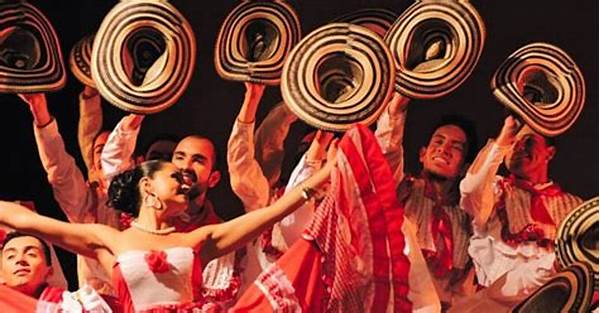Cumbia is not just a musical genre; it’s a vibrant tapestry woven with the threads of history and the diverse cultures that have intertwined to create its irresistible rhythm. Imagine a world where African drums beat harmoniously alongside the melodies of indigenous flutes, all while Spanish guitars strum passionate chords—the result is the infectious sound of cumbia. Embracing the cross-cultural elements in cumbia isn’t just about enjoying great music; it’s about celebrating the power of cultural exchange and unity. In this melting pot of traditions, cumbia stands as a testament to the beauty that arises when diverse cultures come together, creating something greater than the sum of its parts. So, let’s dive into the rich tapestry of cross-cultural elements in cumbia and discover why it resonates so deeply with so many.
Read Now : Trending Tiktok Edm Challenges
The Heartbeat of Diversity
Cumbia’s soul is steeped in a mix of Africa, Indigenous, and European roots, making it a true emblem of cultural fusion. Picture this: cross-cultural elements in cumbia give it that spicy, catchy beat that makes you tap your feet, even if you’re just chilling on the couch. It’s like the original multicultural jigsaw, where each piece snugly fits together yet retains its uniqueness. Think of those traditional African rhythms bringing the heat and mixing with those indigenous flutes that whisper tales from the past. It’s raw, it’s real, and it’s oh-so-danceable. And let’s not forget the Spanish guitar adding that touch of romance. Cumbia’s not just music—it’s history brought to life with every note.
A Melting Pot of Sounds
Cumbia: A Dance of Cultures
Cumbia’s rhythms are more than just beats; they’re the dance of cultures meeting on a common ground. Imagine an old-school record spinning, each groove representing a different culture’s contribution. The cross-cultural elements in cumbia transform this dance into a celebration where everyone’s invited. From its early days on the Atlantic coastal towns of Colombia, cumbia has been a symbol of resistance and resilience. It’s a reminder that despite the struggles and histories, cultures could blend together beautifully.
Fast forward to today, cumbia’s global influence means that you’ll hear it in clubs in Mexico City, street festivals in Buenos Aires, and even at fusion music events worldwide. The cross-cultural elements in cumbia allow it to evolve continually, picking up new influences and flavors yet never losing its core. It’s like a musical passport that welcomes everyone to the party, celebrating a shared rhythm that transcends borders and speaks to the heart.
The Evolution of Cumbia
The transformation of cumbia underscores the dynamic nature of cross-cultural elements in cumbia. As it journeyed from Colombia to the world, cumbia embraced new instruments and styles. Each stop along the way enriched its sound, from Argentine rock infusion to Mexican banda flair. This genre thrives on adaptation and innovation, proving that cross-cultural elements in cumbia are all about evolution. And let’s face it, evolution is sexy—it’s about moving forward, embracing the new while respecting the roots. It’s this very transformation that keeps cumbia fresh and exciting, a musical chameleon adapting to every landscape.
Cumbia’s Musical Fusion
Let’s chat about cumbia—it’s that dope sound that’s like a world tour for your ears. We’re talking about beats that combine and transcend borders, creating something totally unique. The cross-cultural elements in cumbia are the backbone of this vibe, making it relatable to everyone who hears it. Whether you’re from a small town in Colombia or a bustling city in Europe, cumbia tells a story you can feel.
Read Now : Vibrant Latin Rhythms For Dancing
You know what’s cool? Cross-cultural elements in cumbia not only fuel its widespread popularity but also allow it to morph and keep things interesting. Pull in a bit from traditional roots, chuck in modern pop, and maybe sprinkle a bit of reggae for flair, and boom—you’ve got a banger. When we talk about cumbia, it’s about more than music—it’s about dialogue, connection, and letting the music take you places you’ve never been before.
Cumbia: The Everything Bagel of Music
In essence, cumbia is like the “everything bagel” of music; it’s got a little bit of everything packed into it. Thanks to the cross-cultural elements in cumbia, every performance is a unique blend of flavors that everyone can enjoy. It’s a genre that adapts, transforms, and inspires, proving that music is, indeed, a universal language.
